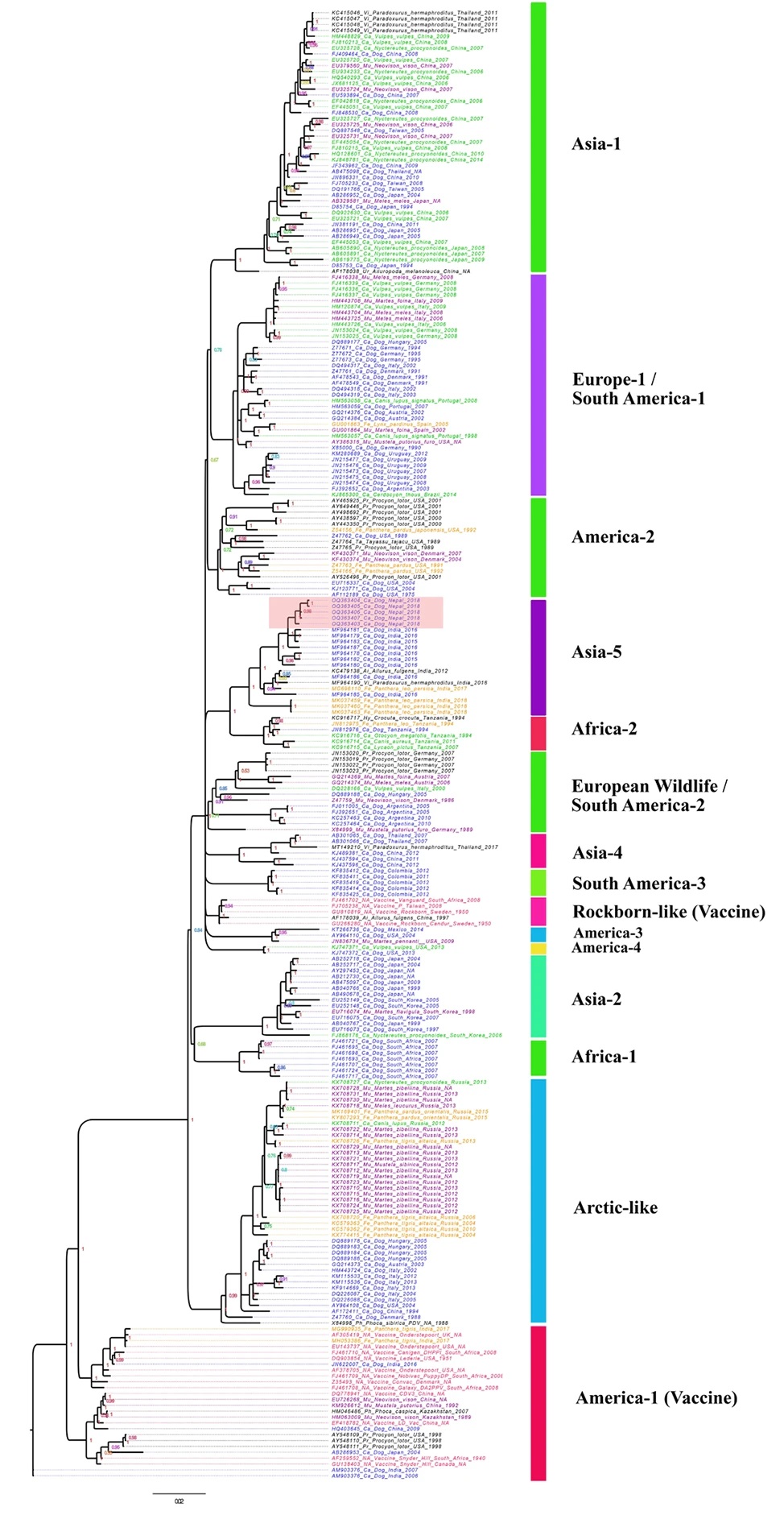Genetic analysis of canine distemper virus in stray dogs from Kathmandu Valley
Published in Public Health and Zoology & Veterinary Science

Canine distemper is a highly contagious and often fatal disease affecting domestic dogs and wild carnivores. The virus has caused major outbreaks in species of high conservation value, such as tigers, lions, and leopards. This makes managing CDV outbreaks critical in Nepal, home to many threatened carnivores like tigers, leopards, snow leopards, dholes, and wolves, along with a large population of stray dogs. While CDV has been suggested as a threat to wild carnivores, no studies have genetically analyzed the virus in Nepal's wildlife.

We collected samples from stray dogs in Kathmandu Valley and identified the CDV strains as part of the Asia-5 lineage, which also includes strains found in India in dogs, civets, red pandas, and lions. Our analysis suggests CDV is likely maintained in a sylvatic cycle among various carnivores, causing repeated outbreaks. To protect threatened carnivores, we recommend regular CDV surveillance in both wild carnivores and domestic dogs.

Follow the Topic
-
Virology Journal

This is an open access, peer reviewed journal that considers articles on all aspects of virology, including research on the viruses of animals, plants and microbes.
Related Collections
With Collections, you can get published faster and increase your visibility.
Coronaviruses: emerging and re-emerging pathogens in humans and animals
This collection of articles has not been sponsored and articles have undergone the journal’s standard peer-review process. The Guest Editors declare no competing interests." with this text "This collection of articles has not been sponsored and articles have undergone the journal's standard peer-review process. This collection was curated by the Editorial Board.
Publishing Model: Open Access
Deadline: Ongoing






Please sign in or register for FREE
If you are a registered user on Research Communities by Springer Nature, please sign in